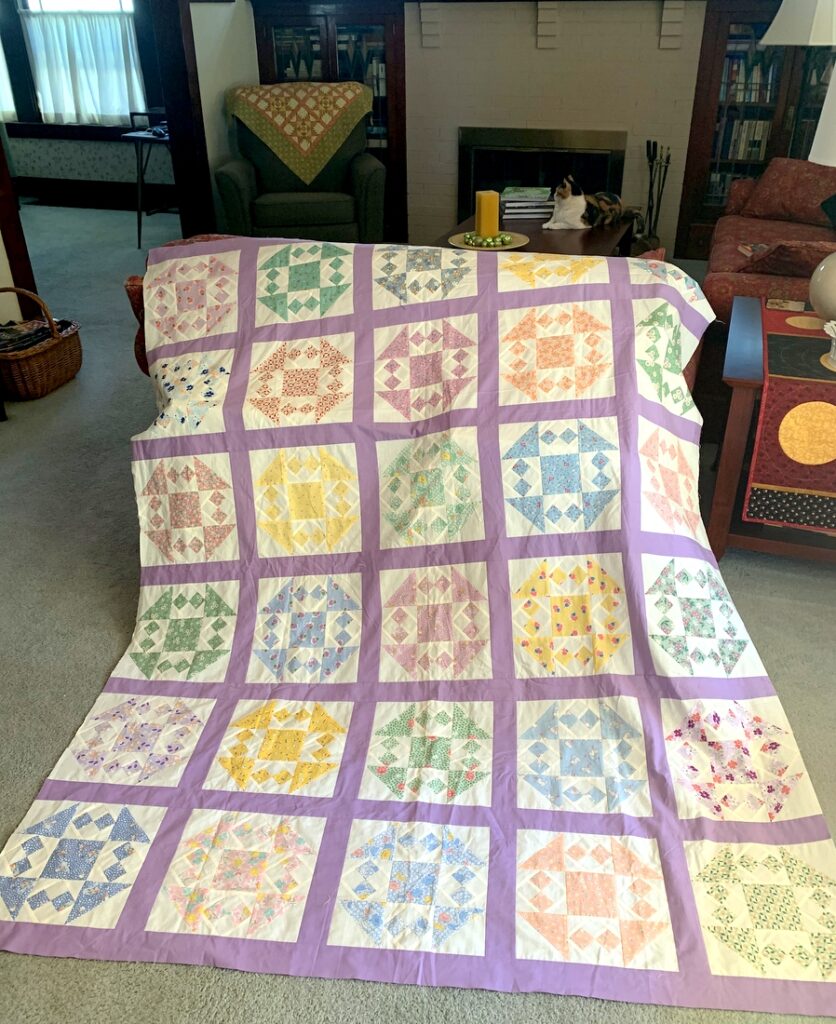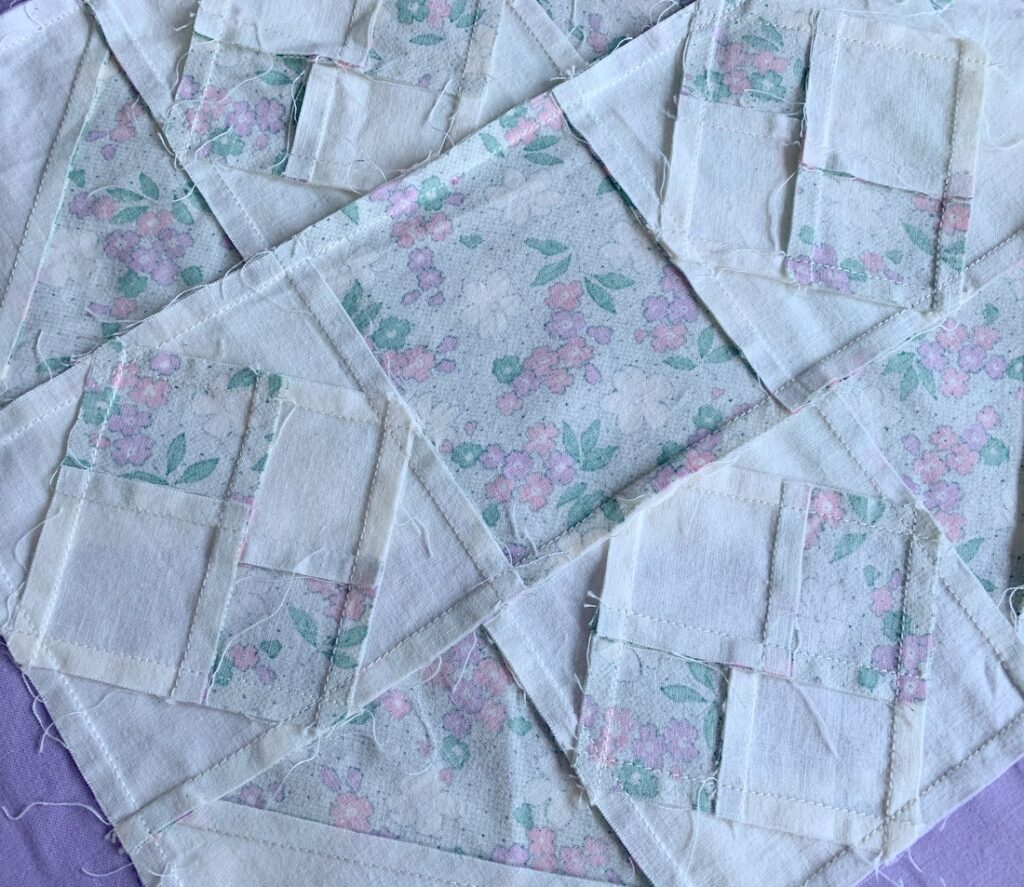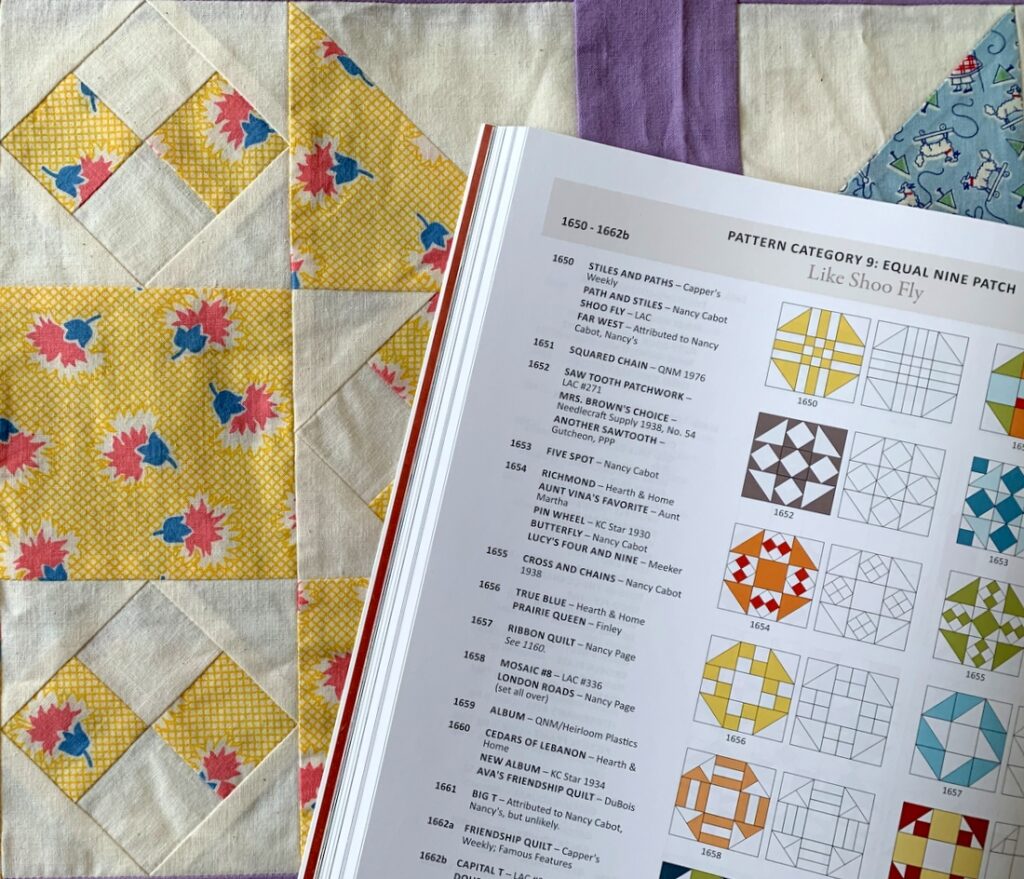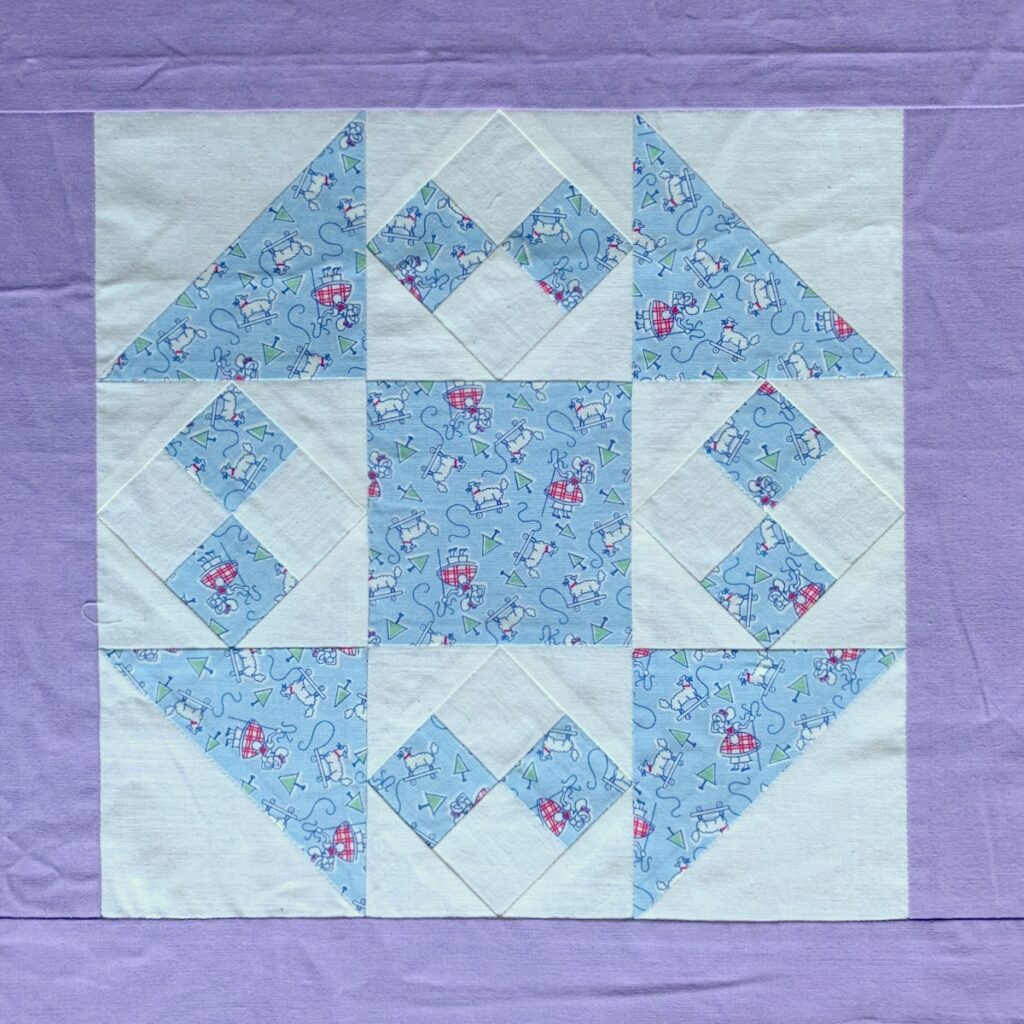My quilt guild held its annual auction last week, selling over 200 items. My goodness, I’ve never seen such an array of generously bundled fabrics along with books, patterns, sewing notions, vintage linens, and even a Singer Featherweight machine. And what did I come home with? This beautifully pieced quilt top:
 We all know the last thing I need is another quilt top when I have so many of my own begging to be finished, but friends, I could not resist. The final bid was $20 — an absolute steal. Truth be told, I would have paid more but the top didn’t seem to be drawing a lot of interest. Was it because I was hovering in the background willing my guildmates to keep passing it by? I also lingered nearby (inconspicuously, I hope) as the auction drew to a close, making sure no one could squeeze in at the last minute to outbid me.
We all know the last thing I need is another quilt top when I have so many of my own begging to be finished, but friends, I could not resist. The final bid was $20 — an absolute steal. Truth be told, I would have paid more but the top didn’t seem to be drawing a lot of interest. Was it because I was hovering in the background willing my guildmates to keep passing it by? I also lingered nearby (inconspicuously, I hope) as the auction drew to a close, making sure no one could squeeze in at the last minute to outbid me.
I have no idea how old this top is or who made it. Judging by the looks of it, the fabrics are 1930s reproductions rather than vintage pieces. What struck me as I unfolded it to get a better look was how beautifully it was pieced. The quiltmaker sewed consistent quarter-inch seams . . .
 . . . and every single point on the front is perfect as a result:
. . . and every single point on the front is perfect as a result:
That makes my little wannabe perfectionist heart go pitty-pat. It also argues for the top being more recent. My guess is that the quiltmaker used a rotary cutter and made very accurate cuts before piecing the top so accurately.
I hadn’t seen that block design before but it seemed to be a variation on the Shoofly block. I did a little research from the best source of all: Barbara Brackman’s Encyclopedia of Pieced Quilt Patterns. Looking in the index under Shoofly, it didn’t take long to find the block, which has several names. It’s known as Richmond, Aunt Vina’s Favorite, Pin Wheel, Butterfly, and Lucy’s Four and Nine:
 Brackman notes that the earliest publication she has seen for the pattern is Hearth & Home magazine about 1915 under the name Richmond.
Brackman notes that the earliest publication she has seen for the pattern is Hearth & Home magazine about 1915 under the name Richmond.
The quiltmaker used a 5 x 6 setting, separating the blocks with 2″-wide sashing. The blocks finish at 10½” square, which seems a bit unusual to me. Right now the top measures 61″ wide by 77½” long. But here’s something a bit odd: there’s a border strip of the lavender lattice fabric on the top and bottom of the quilt top but not on the sides. Look back at the first photo to see what I mean. Could the quilt have been abandoned because the maker didn’t have enough of the lavender fabric to complete the border?
I’ll never be able to find the exact shade of lavender to add side borders. What are my options? Well, I could add side borders with a reasonably close match to the original lavender but in my heart of hearts I know that’s not going to happen. I could remove the top and bottom borders and find a different fabric — perhaps a reproduction print containing many of the colors in the quilt top — to border the blocks. Or I could cut down the lavender fabric on the top and bottom borders and make borders for the sides with what is cut off. Then I could add a larger border of print fabric. Just an idea — but I’m leaning in that direction.
What would you do?


I loved attending the annual auction at MPS when I was a member. You, indeed, got a “steal” with this quilt top! It’s amazing. I am using some of the same “Bo Peep” fabric that you posted so the quilt was stitched fairly recently. It’s a shame the side borders were not finished but I know your finished quilt will be beautiful! (If this was my quilt, I would go with your second option – remove the two borders and find something similar color-wise. But that’s just me!) Have fun with this!
This is lovely! How I wish my quarter inch seams could be exact! I like your idea of taking some off top & bottom to make all four sides lavender & then adding another outside border print. Would be scary to figure out how much you could trim & have enough!
Hello. I think it is more modern because the fabrics look more modern. Reproduction 30s fabrics. I would take off the bottom and the top Sashing/border and put another stop border around it and then a bigger border outside of that. I don’t think there’s enough of the lavender sashing on the top and bottom to cut down to put on the sides.
I love the block pattern. You are lucky to find it.
Beautiful quilt. It is so soothing. Dawn, you are excellent at color choice and design. I hesitate to make a comment. It looks like the top and bottom are the same fabric as the sashing. I think I might take off the borders and replace it with a contrasting color, perhaps a deep purple. Then I would add another wider coordinating print border. I hope you have fun finishing the quilt.
That’s a great suggestion, Rosalind!
What a find! So well made, and in good condition. And a good price!
I’m sure the original maker would be happy that it’s being loved and finished.
And I noticed Coco’s traditional photobomb in the background of your first photo, pretending to be uninterested this time.
First thing I would do is a happy dance at finding and purchasing such a fantastic top! I like the idea of trimming down the top and bottom and then making a border for all four sides. Looking forward to seeing the progress on this piece.
I would take off the top and bottom borders and replace with a different fabric on all four sides. I sure wouldn’t do any more cutting on that pretty top.
It doesn’t look like there would be enough to trim to a skinnier width and then stretch around the top. On occasion I have been known to wrap the fabric around a corner and part of the two sides with the other three corners and sides filled in with a totally different fabric. Because of the way the sashing is I wonder if you want to use what you have to somehow extend the sashing into another fabric altogether? Have a border that is broken up by an extension of the sashing into the border? This is one I would have to measure and sort out the solution based on the numbers…good thing this is a mathy kind of craft! lol
I failed to mention I have seen the block in Sue Garman’s Omigosh! quilt! 🙂
I do love that lavender, Dawn! It’s a darling pattern, and why anyone would abandon it, who can say? However, if I were the lucky winner of that top, I would start by asking everyone to check her stash to see if she owns some of that lavender! I know I might own a piece of solid lavender, and who’s to say whether or not it would match… worth a try, at least. If you didn’t get lucky that way, then I would say to take the top and bottom off and use a print border instead. Lucky you! The piecing is SO precise, wow wow wow! Suzette
I almost think I’d leave as is and leave the question out there — wondering what happened to the other sides…
I was able to bid highest for the 1940’s Dresden plate blocks — have to find some of that strange pink to match for sashing, as the person donating had a photo of the original and had taken it apart to clean and it was no good pink. It must have been a popular quilt and color theme because I found a number like it online. Excited to give it life again!
I like your thought to remove the lavender fabric from the top and bottom. Maybe you can find the just right fabric to cool the lavender. For my eye, the lavender is too harsh or there is too much of it for the lovely squares. Whatever you do it will be lovely.
Hi, Jo Ann. That lavender is actually pretty soft. The colors in my blog post pictures vary so much with time of day and available light. I do think a larger print border all around will diminish the amount of lavender and soften the overall effect.
Well, you have quite a few suggestions from actual quilters, so I (decidedly a non-quilter) will not weigh in, except to say, you never disappoint! I am quite curious why avid quilters (or family members of quilters) would not identify the provenance of items contributed to an auction!
This isn’t one of your options but I recently was gifted a vintage quilt top and I decided to machine quilt it and then cut it up to make a coat! Does that sound sacrilegious?
Not at all, Tam! I hope I get to see you wearing your vintage quilt coat some day.
[…] my post the other day about this quilt top (by an unknown maker) that I bought recently at my guild’s annual […]